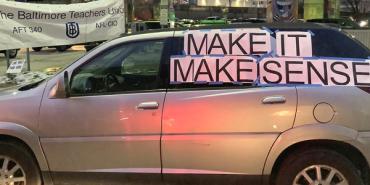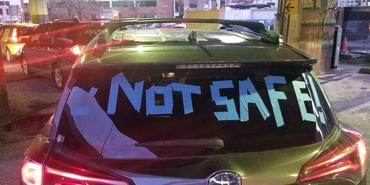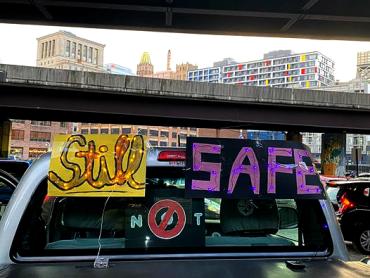Thanks to pressure for safety measures from Baltimore parents, teachers and school staff, the city’s public school system has agreed to delay its rollout of in-person learning until March.
The step comes after members of the Baltimore Teachers Union held an online membership meeting last month that drew more than 2,000 participants, which surpassed the union’s previous record-breaking meeting last fall. The meeting was followed by a 300-vehicle car caravan and the release of a petition signed by about 4,000 family members, school staff and allies aiming to marshal the city’s coronavirus mitigation efforts into a safe and well-coordinated plan.
As it now stands, Baltimore public schools are set to reopen on March 1 for kindergarten through second grade, March 15 for grades 3-5, and April 12 for high school seniors so they can have something of a traditional senior year. Already, there are as many as 1,200 students attending school in person; they are mainly special needs students, immigrants and those without internet access.
“This delayed expansion of in-person learning is a victory that has created space for more safety measures to be put in place,” says BTU President Diamonté Brown. “Union members, parents and students—we all want written commitments for stronger protections. We want to be back in schools with our students, but only when we know conditions are safe.”
A truly safe plan to expand in-person learning, BTU members and parents say in their petition, would include adherence to minimum public health metrics for at least a week, based on standards set by the state of Maryland and the U.S. Centers for Disease Control and Prevention; the completion of ventilation upgrades; vaccination of school staff; and a reliable COVID-19 testing program for staff and students.
On ventilation, three-quarters of the city’s public schools still have inadequate air flow. The district launched an online dashboard to track ventilation upgrades but had to pull it back to fix technical issues.
On personal protective equipment, a memorandum of understanding signed by BTU and the city last fall requires basic health and safety precautions, including soap and hand sanitizer, as well as face coverings. The city recently updated its safety protocols for schools, but it remains unclear how well the city is monitoring and enforcing those guidelines. As of yet, there is no collaborative process to monitor compliance and outbreaks, and there is no additional professional development to cover new learning conditions.
Activism brings results
Since the pandemic swept through the Eastern Seaboard almost a year ago, Baltimore union members, students and families have engaged in many actions to ensure their safety and advance remote learning.
Among the most high-profile of their successes was a campaign by the Baltimore-based Students Organizing a Multicultural Open Society—an effort strongly backed by BTU—that pressured cable giant Comcast into nearly doubling internet speeds for families using its low-cost Internet Essentials program. The change, urgently needed at a time when children must have adequate broadband for remote learning, will take effect nationwide next month.
Other BTU actions have included standing together with the Maryland State Education Association and the Maryland PTA in obtaining a fully virtual opening last fall; organizing a phone bank with more than 160 volunteers making the case to board members, city leaders and the public for going virtual until it is safe; supporting a member-driven COVID-19 task force, which created the petition; and convening school secretaries and other frontline support staff to air their concerns about safety.
“Every student deserves the freedom to thrive, including safe and healthy schools and communities that practice trauma-informed care,” says Fareeha Waheed, a BTU vice president and one of three BTU members on a new city task force that aims to dramatically reduce trauma across Baltimore. “This requires not only addressing COVID-19 and the racial inequities it has exposed, but also creating just and equitable conditions across all systems impacting our students and educators.”
A push for collaboration
Despite these challenges, BTU activists want to make Baltimore a model partnership, bringing the district, union and city together around the goal of reopening schools with science-backed measures to increase safety and address fears about the pandemic.
In addition to continuing its direct talks with the district, BTU wants Baltimore’s new mayor, Brandon Scott, to support the union in coming to an agreement on safeguards in and around buildings. To fight the COVID-19 surge, Scott instituted aggressive interventions immediately upon taking office in December, which likely helped with declining rates of transmission. Now BTU wants the mayor to bring together the school board, the school district CEO, the mayor’s office, students and parents, along with the union, to devise a workable plan.
[Annette Licitra/BTU photos]



